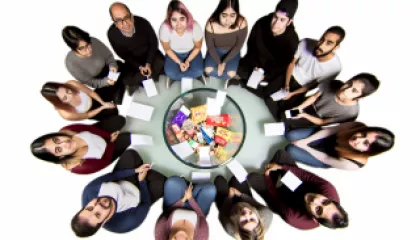悪い習慣を断つ科学の解明
あなたは、なぜ悪い習慣を断ち切るのがとても難しいのか、考えたことがありますか?過剰なおやつ摂取から先延ばしまで、これらの行動パターンは私たちの生活に深く根付き、克服するのは本当に困難です。しかし、もし科学がこれらの望ましくない習慣を効果的に解体するためのツールを提供してくれるのだとしたら、どうでしょうか?この魅力的なトピックについての研究結果について探ってみましょう。
習慣の性質
悪い習慣を断ち切る前に、なぜそれらが最初に形成されるのかを理解することが重要です。科学的研究によると、習慣は基本的に反復的な行動を通じて形成される自動的な反応です。脳はこれらの行動のために神経経路を作り出し、その行動が反復されるほど強くなります。その結果、行動は自動的になり、意識的な考えが少なくなり、つまり習慣が形成されます。
脳の報酬システムの役割
私たちの脳には習慣形成に重要な役割を果たす報酬システムがあります。このシステムは快感と関連する神経伝達物質であるドーパミンに依存しています。おいしいスナックを食べるなど、気持ちが良くなる活動を行うと脳はドーパミンを放出します。この放出によって満足感が生まれ、その活動を繰り返したくなるのです。
しかし、すべての習慣が有益とは限りません。脳の報酬システムは良い習慣と悪い習慣を区別しません。単にドーパミンの放出に反応するだけです。そのため、喫煙や不健康な食事、過度の飲酒などの有害な習慣を簡単に身につけることができるのです。
悪い習慣を断ち切るのが難しい理由
これまで見てきたように、習慣は私たちの脳の機能に深く根付いているため、断ち切るのは困難です。さらに、環境も私たちの習慣を引き起こすことがよくあります。たとえば、食事の後に喫煙する習慣がある場合、単に食事を終えるだけでタバコの渇望が引き起こされることがあります。また、習慣が提供する即時の満足感(ドーパミンの放出)は、長期的な結果よりも私たちの意思決定プロセスにおいて重要視されることが多いです。
習慣の断ち切り戦略に関する研究
課題はあるものの、研究では悪い習慣を断ち切るためのいくつかの効果的な戦略が特定されています。これらの戦略は、習慣ループと呼ばれる循環(手がかり、ルーチン、報酬)を理解し、操作することに焦点を当てています。
1. 認識のトレーニング
ロンドン大学の研究者たちが行った研究によると、習慣ループに対する認識を高めることで悪い習慣を断ち切るのに役立つことがわかりました。このプロセスは、習慣に関連する手がかり、ルーチン、報酬を特定し、その循環が発生するタイミングに注意を向けることです。
2. 代替行動
科学者によると、望ましくない習慣を健康的な行動に置き換えることも効果的な戦略です。たとえば、ストレス時にジャンクフードを食べる習慣がある場合、散歩に行ったりマインドフルネスの練習をしたりできます。
3. 徐々の変化
習慣を断ち切ることは、必ずしも突然止めることを意味しません。研究によれば、徐々な変化が効果的であり、特に根付いた習慣に対しては有効です。これは、行動の頻度を減らしてから完全にやめるということを意味するかもしれません。
4. 社会的支援
社会的な支援も悪い習慣を断ち切る上で重要な役割を果たすことがあります。『アメリカ公衆衛生学雑誌』に掲載された研究では、禁煙を試みる人々が、禁煙を試みている友人や家族などの社会的な支援を受けている場合、成功率が高まることがわかりました。
自己信念の力
これらの戦略は効果的ですが、それらにはコミットメントと自己信念が必要です。研究によると、悪い習慣を断ち切るうえでの鍵となる要素の1つは、個人の変化能力である自己効力感です。この自己効力感は、習慣の変化の成功率に大きな影響を与えることがあります。
結論
悪い習慣を断ち切ることは、私たちの脳の機能や習慣形成と持続に関わる要因を理解する複雑なプロセスです。しかし、認識、代替行動、徐々の変化、社会的支援、自己信念を持つことによって、これらの望ましくないパターンを効果的に解体することができます。このプロセスに関する科学的な洞察は、変化のための実践的な戦略を提供するだけでなく、私たち自身をより良く理解し、習慣を個人的な失敗ではなく脳の一部として見ることができるようにしてくれます。






